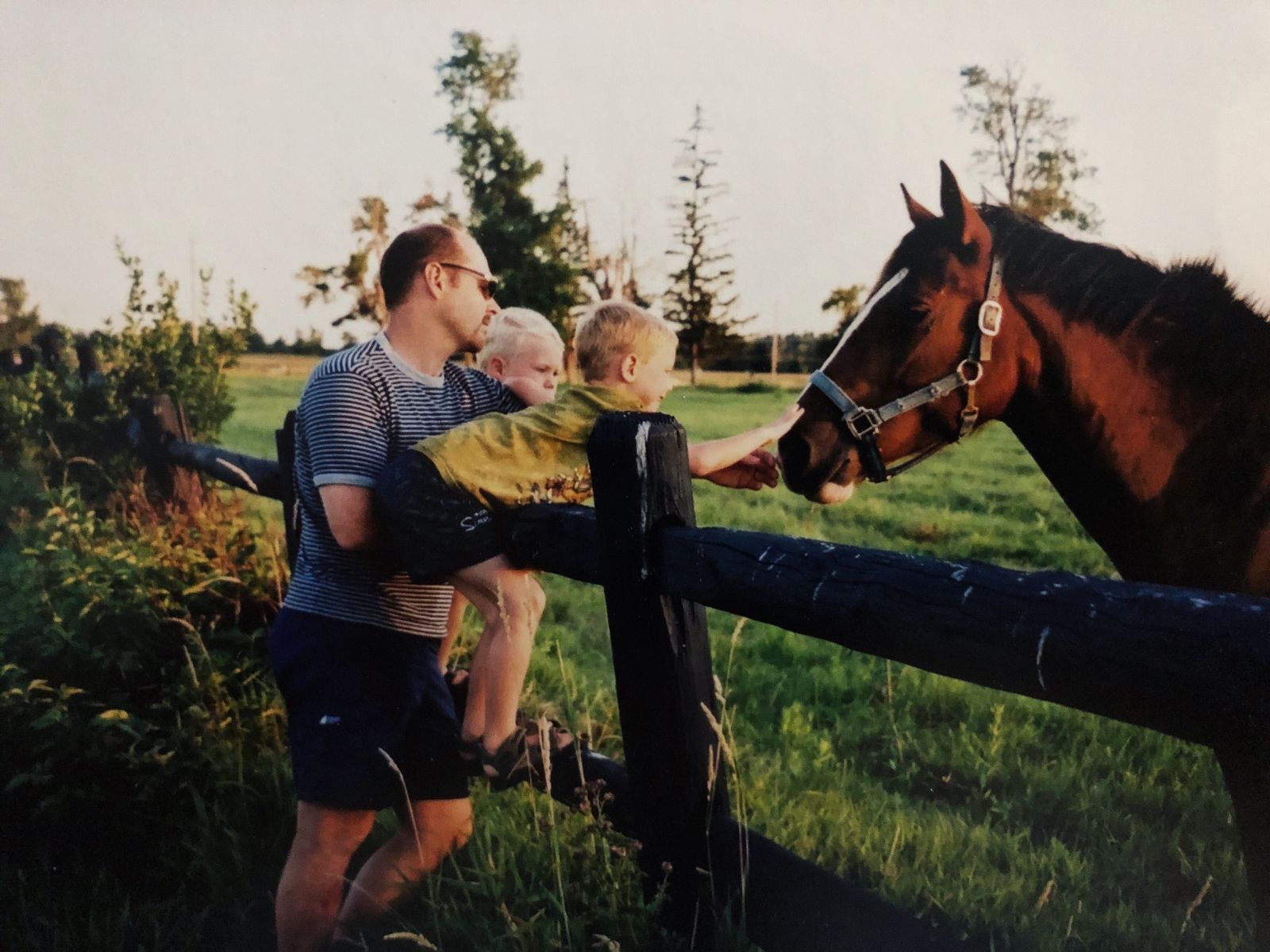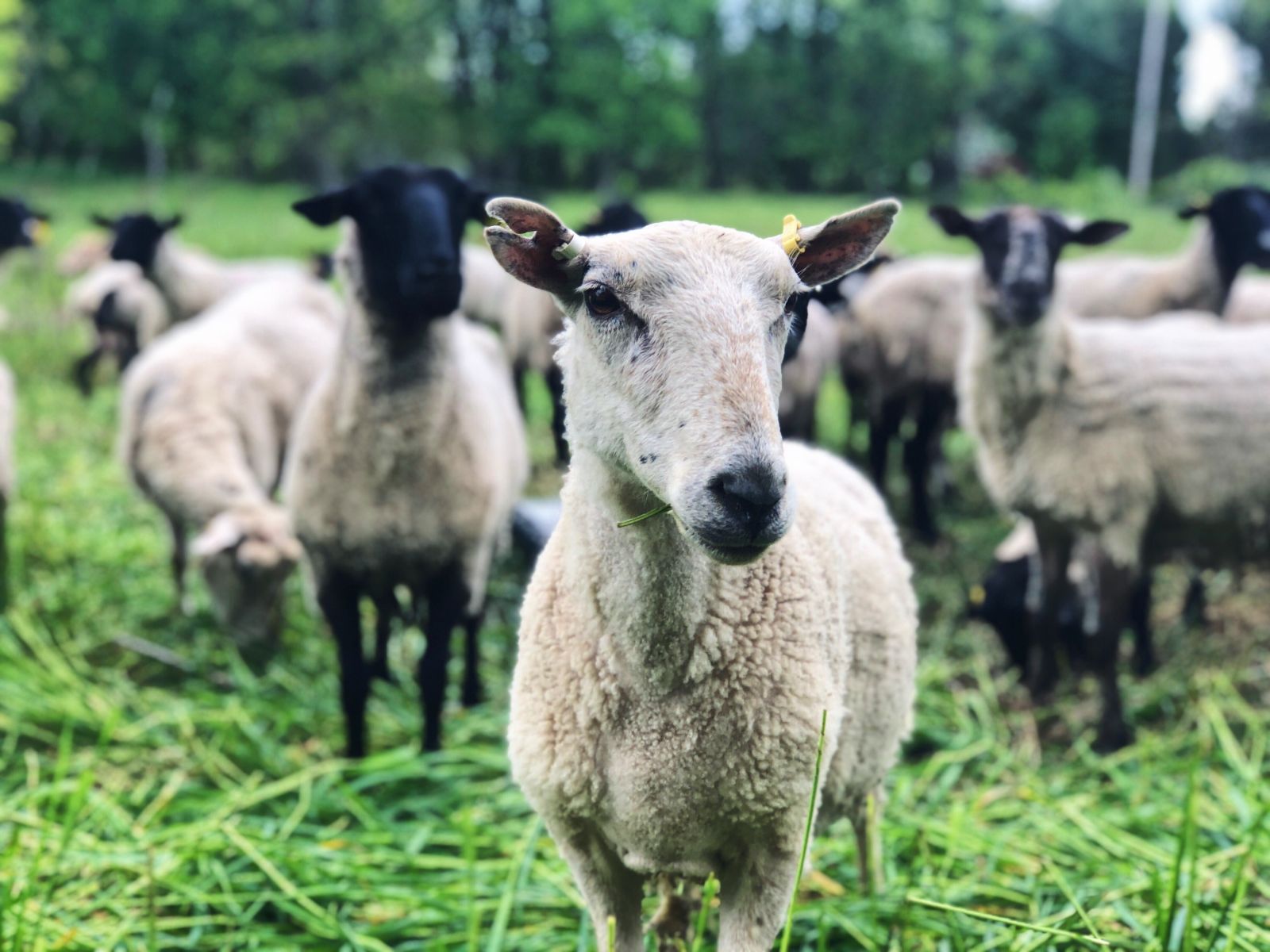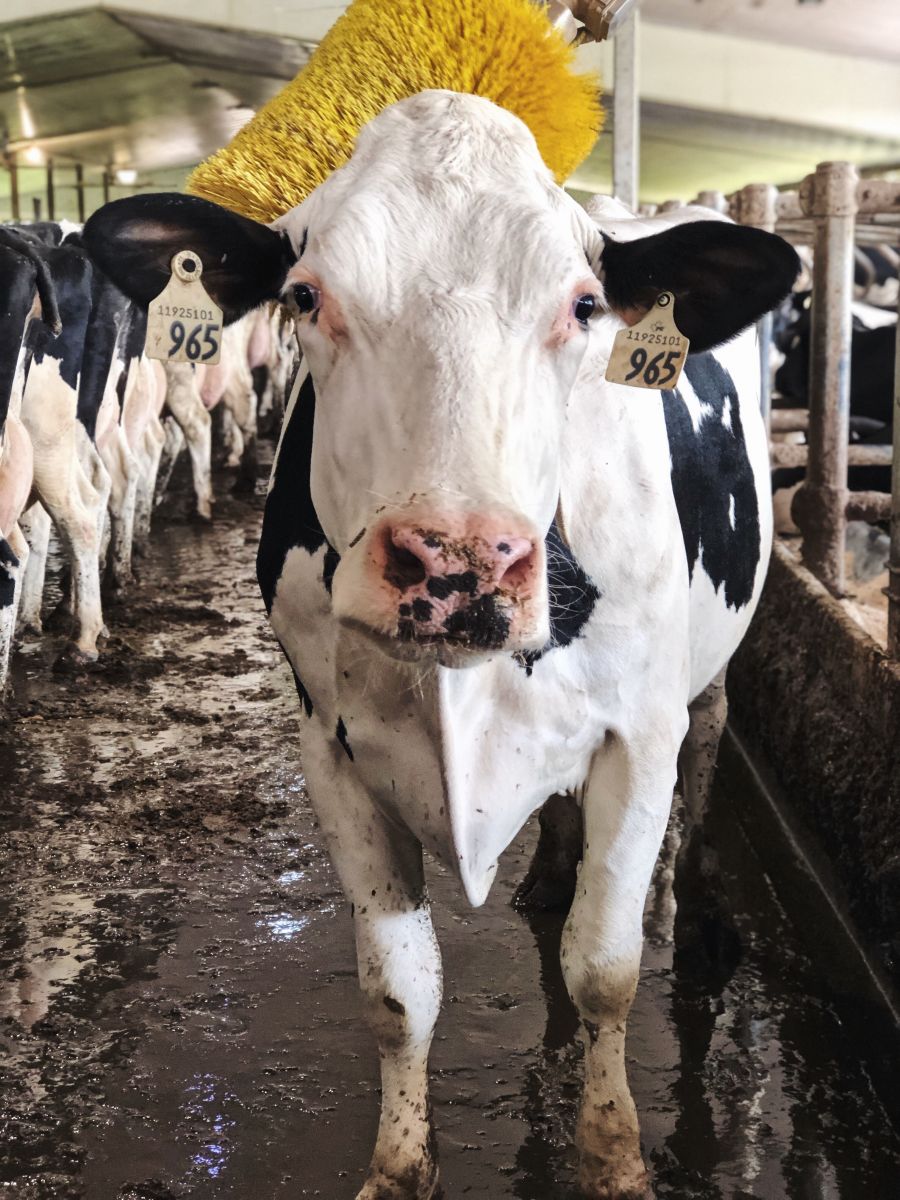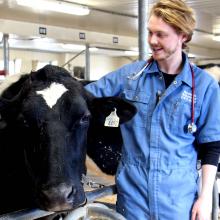Growing up, some of my fondest memories were our trips out to the farm to visit my grandparents. Being from the Ottawa area, a short 30-minute drive from our front door was all it took to find yourself in a different landscape. Tall buildings and residential housing was replaced with green soybean fields, golden cobs of corn seated on tall stalks, and beautiful old barns lining the highway. I remember sitting in the backseat with my brother, full of excitement, as I repeatedly said “Did you see those cows Jake?”

 upstairs library about what it was like to be a country vet. There was even a time that I remember coming to the farm and watching the vet treat one of the horses. Little did I know that this collection of memories would ultimately shape my dream of being a mixed animal veterinarian. Even more so, little did I know that the vet I saw at my Oma’s farm years ago, was the current owner of the Martintown Animal Hospital, the clinic where I’m currently doing my externship. Small world.
upstairs library about what it was like to be a country vet. There was even a time that I remember coming to the farm and watching the vet treat one of the horses. Little did I know that this collection of memories would ultimately shape my dream of being a mixed animal veterinarian. Even more so, little did I know that the vet I saw at my Oma’s farm years ago, was the current owner of the Martintown Animal Hospital, the clinic where I’m currently doing my externship. Small world.
...and Martintown sure is a small town. Starting my externship here at Martintown Animal Hospital (MAH) has already broadened my perspective on what it means to be a mixed animal practice in rural Eastern Ontario. After seeing how this practice operates in a rural setting, I could not be more certain of my future aspirations of pursuing a career in mixed medicine. Here’s a couple things I’ve already learned after two weeks.
Number 1: Being in a rural setting, your expectations as a mixed practice change tremendously from clinics in the city. MAH is one of only three main mixed practices that provide large animal services from East Ottawa to the Quebec border. This means that for their clients, they are the one-stop shop for all their animal’s medical needs. For that reason, it’s become very clear that being able to provide large and small animal services, as well as being competent in both disciplines, is an asset.
Number 2: The clientele that they serve tends to be very budget conscious and practical when making their decisions on their pet’s/herd’s care. Being a low cost-high volume practice, this means that you need to prioritize how you treat your patients to make sure each patient gets the highest quality care regardless of their financial limitations.
Number 3: Being in a rural setting means that you as a mixed vet fill many different roles beyond just a small and large animal general practitioner. Being one of a few options in this area means they act as both the general hospital and the emergency referral hospital. Most of the clients don’t have the luxury of being able to drive an hour or more to Ottawa or Montreal to be seen by an emergency referral veterinarian. This means as a practice, they experience a large and diverse case load; as a student, this is the ideal learning environment.
To give you a snapshot of what I mean, these have been my favourite days so far:
.JPG)
- Pregnancy checks on cows (using ultrasound and manual rectal palpation, we determined where the cows were at in their estrous cycle or stage of pregnancy. Normally there are at least 20 to 30 at each farm)
- Uterine prolapse (an emergency situation post-calving where the lower reproductive tract comes out and needs to be put back in)
- Left Displaced Abomasum (LDA) toggle surgery (the abomasum, or true stomach, twists to the left of the cows’ rumen and becomes filled with gas and fluid. The toggle surgery involves us rolling the cow on their back to put the abomasum back in the right place and then using pins and suture material to hold it in place without having to make an incision into the abdomen)
Afternoon
- Scheduled appointments for healthy and sick dogs/cats (this day I saw a dog with neurological deficits that had been hit by a car, kittens with upper respiratory tract infections, a dog with a ruptured cruciate ligament in his right knee, a hematoma or blood blister on a dog’s ear, and many more cases!)
- Abdominal explore (exploratory laparotomy) surgery on a dog with a suspected intestinal foreign body (under anesthesia, we went in to surgically remove the obstructing material).
 After Hours
After Hours
- Right Displaced Abomasum (RDA) surgery (similar to the LDA, but the abomasum twists and dilates on the right side of the cow. This is an emergency and required us to make an incision into the abdomen and go in surgically to release the gas, manual untwist it, and tack the abomasum down to the surrounding tissue so it doesn’t twist again)
Needless to say, I’ve already seen plenty of cases that would have been referred had this been a city practice. As a future veterinarian, this fast-paced environment is what I thrive in. I like diversity in my day, and one of the greatest things thing about veterinary medicine is that it allows you to have that balance. What better example than being a mixed animal veterinarian am I right? Whether it’s being on the road driving to farm calls or in appointments back at the clinic, being in a practice where these vets are problem solving through challenging cases on a daily basis is the kind of environment that fosters growth as a student. I can’t believe how much knowledge and perspective I’ve gained in such a short period of time. If what I’ve seen so far is any indication of what the rest of my weeks will bring, a mixed animal practice is the place for me.
